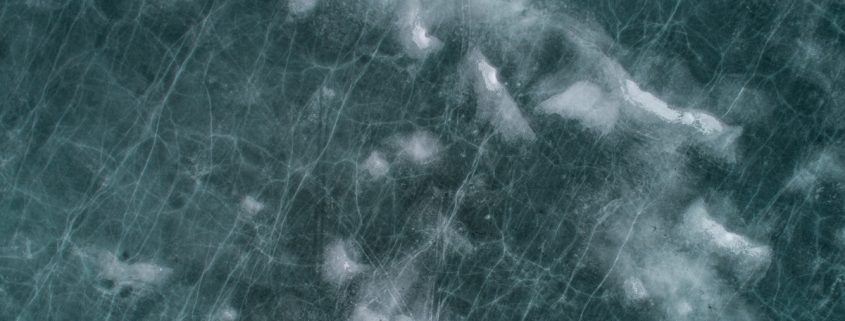“If you’re skating on thin ice, you might as well dance.”
– Anita Shreve
A couple of weeks ago my sons and I decided to take a walk. The idea was cut short as soon as we noticed the canal in front of our home had frozen over. At that point it became play time as we slid around on the ice laughing, falling, and having a blast. Our playground that day came to us courtesy of an extremely long cold snap that took temperatures down into the teens and even single digits on a few occasions. All of the bundling up and discomfort we experienced over the course of what seemed like an interminable period of time all disappeared in a flash at the joy we felt on that ice.
One of the fascinating things we noticed was, even though the ice had frozen to a thickness that easily supported our weight, there were enormous cracks just beneath the surface. As soon as we returned home, the research began. Among the dozen or so causes and descriptions are the following.
- Tight cracks: cracks where the ice is tight together. They have some tensile strength.
- Contraction cracks form when an ice sheet shrinks due to cooling.
- Transverse wide cracks that run between adjacent pressure ridges
- Shear cracks (spiral cracks)
- Tectonic Cracks: when pressure ridges terminate they almost always have a crack.
- Pressure ridges involve cracks of several types
- Subsurface cracks: visible only in the lower half of the ice sheet.
There is a wonderful analogy between the freezing cold, the cracks in the ice, the opportunity to experience a rare event in walking and playing on the Kanawha Canal (it doesn’t ice over very often here in Richmond, Virginia) and Cancer. It goes like this: The freezing cold represents a person’s response to the diagnosis of Terminal Cancer. This lasts anywhere from a week or two up to a year or two. The cracks in the ice stand for the setbacks we endure as we take two steps forward and one step back as gradually the fear, anxiety, stress, and anger (most always aimed at God) give way to hope, encouragement, and optimism. This change in outlook makes an incredible difference in both life expectancy and how our support network engages to assist in our battle against this scourge called Cancer. The wonderful joy and playfulness provided by the unexpected opportunity to be out on solid ice represents the outcomes we continually see here at Cord of 3 Strands. Our people are given the tools with which to achieve a 180-degree change in attitude. This type of sea change means the world to the individual, their family, and for his or her friends.
Hearing the words, “You Have Cancer” is always life-changing. The trajectory of the change, however, is our choice. We can allow the ice to swallow us up OR we can open ourselves up the times of sheer joy still available in the future. In my experience as a pastor in the church and now as Executive Director of Cord of 3 Strands there are two ways and only two ways our lives turn out. One is despair and the other is faith. The importance of what we are doing is summed up in this one statement. We take people who are stuck in despair and over the course of time turn that despair back to faith.
If you know someone who needs help dealing with a diagnosis or would like to support our work please contact us at 804-248-9924.





Leave a Reply
Want to join the discussion?Feel free to contribute!